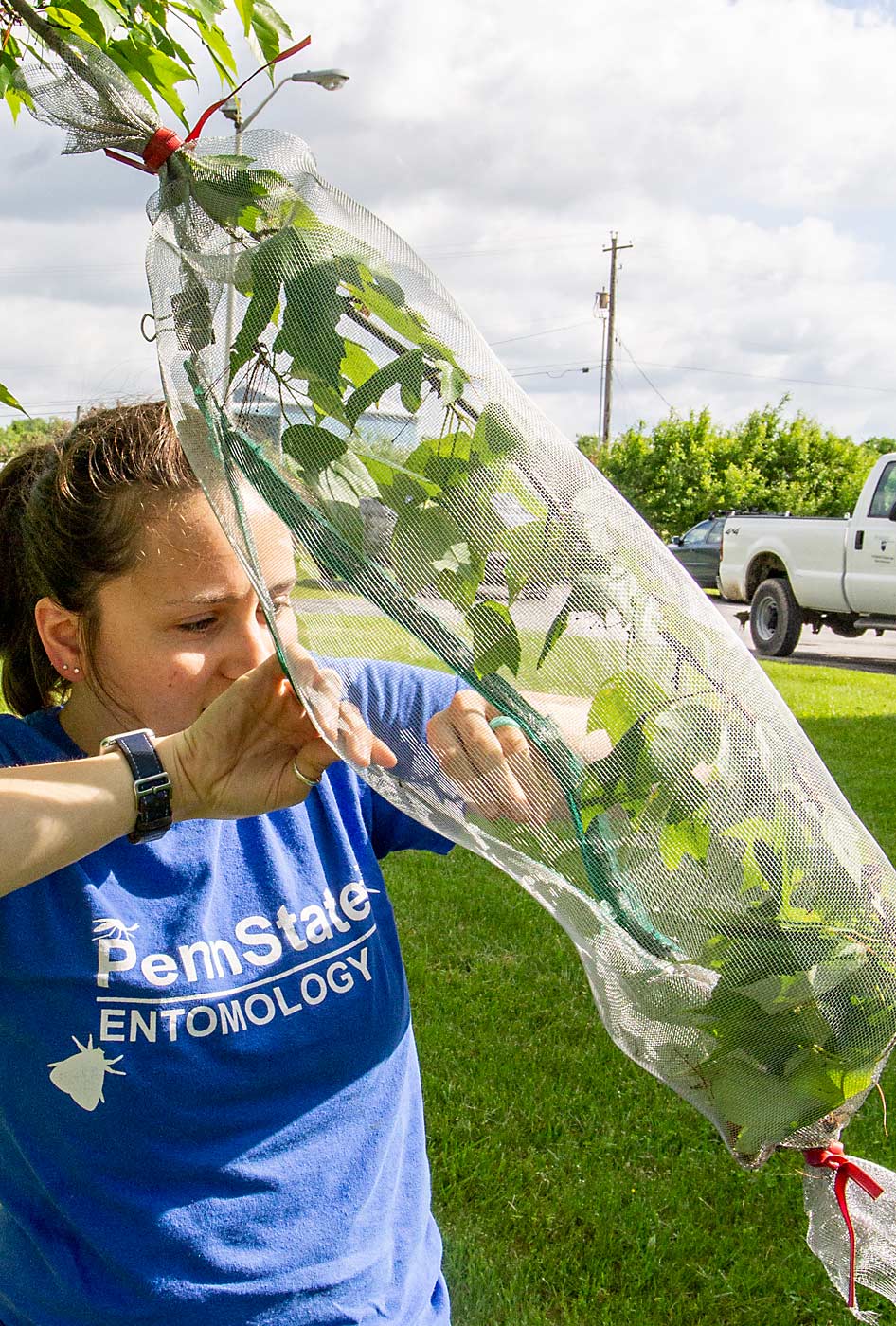
Hillary Peterson, a graduate student at Penn State University, checks her net enclosure for egg masses laid by the brown marmorated stink bugs living inside. The mesh bags allow tiny parasitoid wasps in, so Peterson hopes to measure egg parasitism under more natural conditions than the usual eggs-on-an-index-card sampling technique. (Kate Prengaman/Good Fruit Grower)
While many researchers hope the samurai wasp can provide a biocontrol for brown marmorated stink bug, at Penn State University’s Fruit Research and Extension Center in Biglerville, researchers are taking another look at the tiny parasitoid’s native cousins.
At first, it seemed as though the native parasitoids would occasionally attack BMSB, but not very effectively, said Hillary Peterson, a Ph.D. candidate at Penn State.
When she began to take a closer look at the issue, she realized researchers might not be seeing parasitism because the method of sampling — placing frozen egg masses on paper cards — didn’t trigger the parasitoids’ attention.
“My big question is: How are they finding the eggs in the first place? Clearly something is similar between the eggs they know and BMSB,” she said.
Do the wasps track the scent of the eggs or the scent of the female laying the eggs? Or the scent released by the plant when it responds to the egg glue? Or the mating vibrations of the stink bugs before the eggs are even laid?
“I’m trying to think of all the sensations of the parasitoid,” she said.
So, she designed experiments to sample parasitism in a more natural way. Using net bags with mesh large enough to let small egg predators in but too small to let stink bugs out, she puts live, laying females out into the environment.
The hope is that live, laying female stink bugs will trigger more response from parasitoids and provide a better assessment of the control potential from both native wasps and T. japonicus, as well.
—by Kate Prengaman
Related: Raising a stink for BMSB research






Leave A Comment